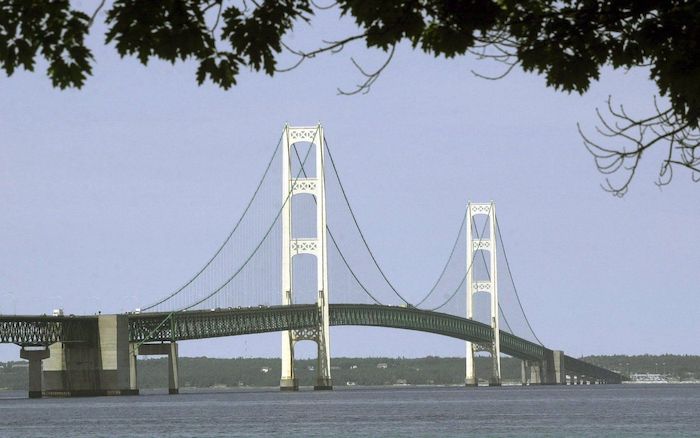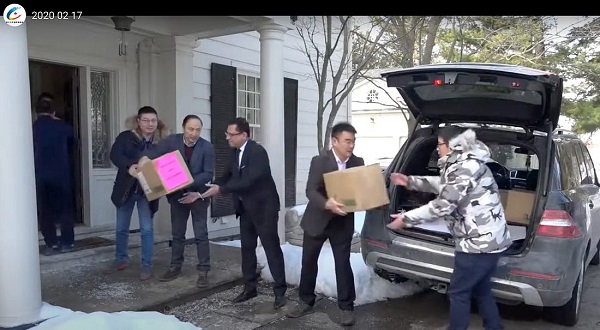Alberta
Response: This Is Why Geothermal Should Be Our First Choice When It Comes To An Energy Transition

I write in response to “CBC News Poll: Why the economic crisis could speed up transition to renewable energy” published recently:
(see: CBC News poll: Why the economic crisis could speed up transition to renewable energy)
Geothermal is the missing link in Earth’s energy mix. It’s the only scalable solution that is both clean and baseload. Without a clean baseload power source, the grid will struggle to replace all the legacy coal, gas and nuclear power, with just intermittent sources like wind and solar (even with better batteries than exist today).
Geothermal, however, can fill this gap. More importantly, we can do this not by importing windmills, solar panels and batteries from China, but by building on the same world-leading assets and expertise that sit idle in the oil service industry today. We can lead the world simply by using this expertise to convert our old abandoned well sites to geothermal use.
Even better, Eavor’s “made in Canada” solution (which is available to any Canadian developer), facilitates rapid scaling. In particular, Eavor’s technology eliminates or vastly reduces the need for exploration uncertainties, delays and costs. It also transforms geothermal from baseload to dispatchable. This allows Eavor to work much more synergistically with wind and solar where needed. Eavor’s technology, known as “Eavor-Loop™”, works by drilling a sealed well-bore loop which gently harvests geothermal heat over a large surface area simply through conduction. Without the need for a geothermal aquifer, this enables implementation almost anywhere in the world. In line with this, Eavor has assembled a multi-year, multi-billion-dollar prospect pipeline. These prospects are, however, all outside of Western Canada.
What will it take to enable Eavor, and other Canadian geothermal developers like Terrapin and DEEP, to bring this geothermal revolution home? The same thing that has nurtured successful and growing geothermal industries elsewhere – a combination of early grants and energy pricing that recognizes the advantages of green baseload power. Ideally these incentives would be modeled after the SDE+ system in the Netherlands, which is more efficient, but has the same net effect as a Feed-in-Tariff.
Our calculations are that, a geothermal “Moon Shot” for Western Canada with the above incentives, could easily attract $4 billion in foreign investment capital, to create 400 MW of clean, dispatchable power, all the while employing 5,500 oil service workers for 4 years. Larger plans could employ 25,000 for a decade or more. Such a plan would create a geothermal ecosystem in Canada that could lead the world and represent an entire new clean export industry. At Eavor, we believe that is a vision worth getting excited about. In short, the current situation doesn’t have to devolve into a fight between oil industry jobs or renewables. It doesn’t have to be a zero-sum game. With geothermal solutions like Eavor the same investment dollar can protect oil service jobs and improve the environment all at the same time.
To learn more about Eavor visit Eavor
For more stories, visit Todayville Calgary
Alberta
Made in Alberta! Province makes it easier to support local products with Buy Local program

Show your Alberta side. Buy Local. |
When the going gets tough, Albertans stick together. That’s why Alberta’s government is launching a new campaign to benefit hard-working Albertans.
Global uncertainty is threatening the livelihoods of hard-working Alberta farmers, ranchers, processors and their families. The ‘Buy Local’ campaign, recently launched by Alberta’s government, encourages consumers to eat, drink and buy local to show our unified support for the province’s agriculture and food industry.
The government’s ‘Buy Local’ campaign encourages consumers to buy products from Alberta’s hard-working farmers, ranchers and food processors that produce safe, nutritious food for Albertans, Canadians and the world.
“It’s time to let these hard-working Albertans know we have their back. Now, more than ever, we need to shop local and buy made-in-Alberta products. The next time you are grocery shopping or go out for dinner or a drink with your friends or family, support local to demonstrate your Alberta pride. We are pleased tariffs don’t impact the ag industry right now and will keep advocating for our ag industry.”
Alberta’s government supports consumer choice. We are providing tools to help folks easily identify Alberta- and Canadian-made foods and products. Choosing local products keeps Albertans’ hard-earned dollars in our province. Whether it is farm-fresh vegetables, potatoes, honey, craft beer, frozen food or our world-renowned beef, Alberta has an abundance of fresh foods produced right on our doorstep.
Quick facts
- This summer, Albertans can support local at more than 150 farmers’ markets across the province and meet the folks who make, bake and grow our food.
- In March 2023, the Alberta government launched the ‘Made in Alberta’ voluntary food and beverage labelling program to support local agriculture and food sectors.
- Through direct connections with processors, the program has created the momentum to continue expanding consumer awareness about the ‘Made in Alberta’ label to help shoppers quickly identify foods and beverages produced in our province.
- Made in Alberta product catalogue website
Related information
Alberta
Province to expand services provided by Alberta Sheriffs: New policing option for municipalities

Expanding municipal police service options |
Proposed amendments would help ensure Alberta’s evolving public safety needs are met while also giving municipalities more options for local policing.
As first announced with the introduction of the Public Safety Statutes Amendment Act, 2024, Alberta’s government is considering creating a new independent agency police service to assume the police-like duties currently performed by Alberta Sheriffs. If passed, Bill 49 would lay additional groundwork for the new police service.
Proposed amendments to the Police Act recognize the unique challenges faced by different communities and seek to empower local governments to adopt strategies that effectively respond to their specific safety concerns, enhancing overall public safety across the province.
If passed, Bill 49 would specify that the new agency would be a Crown corporation with an independent board of directors to oversee its day-to-day operations. The new agency would be operationally independent from the government, consistent with all police services in Alberta. Unlike the Alberta Sheriffs, officers in the new police service would be directly employed by the police service rather than by the government.
“With this bill, we are taking the necessary steps to address the unique public safety concerns in communities across Alberta. As we work towards creating an independent agency police service, we are providing an essential component of Alberta’s police framework for years to come. Our aim is for the new agency is to ensure that Albertans are safe in their communities and receive the best possible service when they need it most.”
Additional amendments would allow municipalities to select the new agency as their local police service once it becomes fully operational and the necessary standards, capacity and frameworks are in place. Alberta’s government is committed to ensuring the new agency works collaboratively with all police services to meet the province’s evolving public safety needs and improve law enforcement response times, particularly in rural communities. While the RCMP would remain the official provincial police service, municipalities would have a new option for their local policing needs.
Once established, the agency would strengthen Alberta’s existing policing model and complement the province’s current police services, which include the RCMP, Indigenous police services and municipal police. It would help fill gaps and ensure law enforcement resources are deployed efficiently across the province.
Related information
-

 2025 Federal Election1 day ago
2025 Federal Election1 day agoBREAKING from THE BUREAU: Pro-Beijing Group That Pushed Erin O’Toole’s Exit Warns Chinese Canadians to “Vote Carefully”
-

 Daily Caller1 day ago
Daily Caller1 day agoTrump Executive Orders ensure ‘Beautiful Clean’ Affordable Coal will continue to bolster US energy grid
-

 Business1 day ago
Business1 day agoChina, Mexico, Canada Flagged in $1.4 Billion Fentanyl Trade by U.S. Financial Watchdog
-

 2025 Federal Election1 day ago
2025 Federal Election1 day agoTucker Carlson Interviews Maxime Bernier: Trump’s Tariffs, Mass Immigration, and the Oncoming Canadian Revolution
-

 COVID-1920 hours ago
COVID-1920 hours agoTamara Lich and Chris Barber trial update: The Longest Mischief Trial of All Time continues..
-

 2025 Federal Election23 hours ago
2025 Federal Election23 hours agoAllegations of ethical misconduct by the Prime Minister and Government of Canada during the current federal election campaign
-

 Energy21 hours ago
Energy21 hours agoStraits of Mackinac Tunnel for Line 5 Pipeline to get “accelerated review”: US Army Corps of Engineers
-

 Business1 day ago
Business1 day agoDOGE Is Ending The ‘Eternal Life’ Of Government






